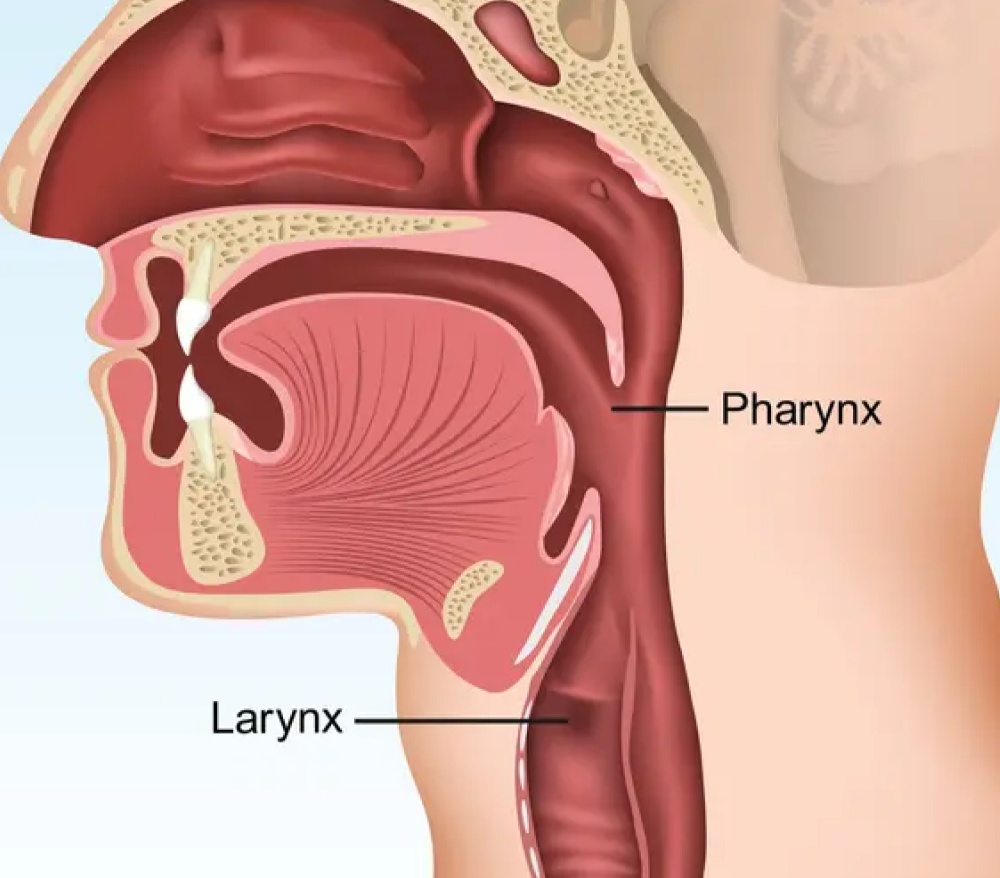Advanced Larynx & Pharynx Cancer Treatment with Voice Preservation
Larynx & Pharynx Cancer Treatment at Thangam
Larynx & Pharynx Cancer Treatment Options
Voice-Preserving Treatment for Larynx & Pharynx Cancer
Radiation Treatment for Larynx & Pharynx Cancer
Surgery in Larynx & Pharynx Cancer Treatment
Larynx & Pharynx Cancer Treatment Team
Diagnosis Before Larynx & Pharynx Cancer Treatment
Larynx & Pharynx
Cancer

Larynx & Pharynx Cancer care at Thangam cancer center
Advanced Care for Throat Cancers with Surgical & Non-Surgical Options
Laryngeal and pharyngeal cancers, commonly referred to as throat cancers, affect vital areas involved in breathing, swallowing, and speech. Early detection and expert treatment significantly improve outcomes, and at Thangam Cancer Center, we offer comprehensive, patient-centered care using the latest in surgical oncology and minimally invasive technologies.
What Are Larynx and Pharynx Cancers?
The pharynx is a muscular tube that connects the nose and mouth to the esophagus and larynx. It has three parts:
- Nasopharynx behind the nose
- Oropharynx behind the mouth, includes tonsils and base of tongue
- Hypopharynx lower part near the voice box and food pipe
The larynx, or voice box, is responsible for sound production and protecting the airway during swallowing. It includes:
- Supraglottis upper portion above vocal cords
- Glottis includes the vocal cords
- Subglottis area below the vocal cords


Risk Factors for Larynx and Pharynx Cancers
Understanding the causes helps in early prevention and lifestyle modification:
- Tobacco use Smoking or chewing tobacco is the leading risk factor
- Alcohol consumption Synergistic effect when combined with tobacco
- HPV infection Human papillomavirus is linked to oropharyngeal cancer
- Epstein-Barr Virus (EBV) Associated with nasopharyngeal cancer
- Poor oral hygiene and nutrition
Symptoms of Larynx & Pharynx Cancer
These cancers often present with persistent or progressive symptoms, which should not be ignored:

Chronic cough

Enlarged lymph nodes in the neck

Difficulty in swallowing or breathing

Sensation of a lump or sore throat that doesn't heal

Ear pain (referred pain from throat cancer)
Early diagnosis can lead to more effective, organ-preserving treatment.

Types of Throat Cancers (Terminology)
- Nasopharyngeal Cancer – Arises from the nasopharynx (behind the nose)
- Oropharyngeal Cancer – Arises from the oropharynx (tonsils, base of tongue)
- Hypopharyngeal Cancer – Lower pharynx, behind and beside the voice box
- Glottic Cancer – Originates from the vocal cords
- Supraglottic Cancer – Develops above the vocal cords
- Subglottic Cancer – Located below the vocal cords
Prevention Tips
You can significantly reduce your risk of developing throat cancers by making key lifestyle changes:
- Quit all forms of tobacco Including smoking, chewing, and exposure to second-hand smoke
- Avoid alcohol Even social drinking increases risk
- Eat a balanced diet Rich in fruits and vegetables for immune support
- Get vaccinated against HPV Especially important for adolescents and young adults
- Regular screenings Especially if you’re at high risk or have symptoms


Diagnosis and Evaluation
Early diagnosis is crucial for voice and function preservation. Our diagnostic approach at Thangam Cancer Center includes:
- Endoscopic Evaluation
- Bronchoscopy and Upper GI Scopy – Direct visualization of the tumor, its location and extent .
- Allows for biopsy for definitive cancer diagnosis
- Biopsy
- Tissue sample is examined microscopically to determine the type and grade of cancer
- Imaging Tests
- CT Scan of Head & Neck – Helps in assessing tumor size and local spread
- PET-CT Scan – Recommended in advanced or large tumors to detect spread to lungs, liver, bones, etc.
Treatment Options for Larynx & Pharynx Cancer
Treatment depends on the location, stage, and patient’s overall health. Our expert tumor board customizes the plan to ensure optimal outcomes and quality of life.
Reserved for specific situations or when other treatments are not effective
- Partial or Total Laryngectomy Removal of part or all of the voice box
- Laryngopharyngectomy Removal of both larynx and pharynx in extensive disease
- Neck dissection Removal of affected lymph nodes
- Rehabilitation post-surgery Patients can regain speech using voice prosthesis or electro-larynx
- First-line treatment for early-stage or localized tumors
- Often combined with chemotherapy in more advanced cases
- Can help preserve the voice and swallowing function
- Used with radiation (concurrent chemoradiation) for locally advanced cancers
- Also used in metastatic or unresectable cases to control disease
- Endoscopic or Robotic Surgery is effective for early-stage throat cancers
- Less scarring, faster recovery, and better functional outcomes




